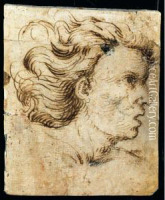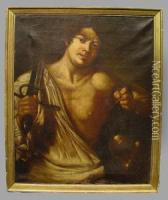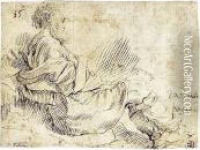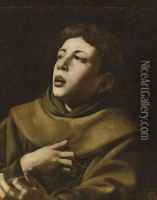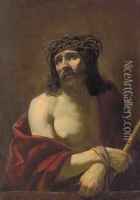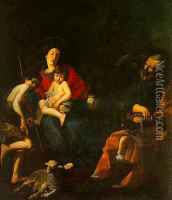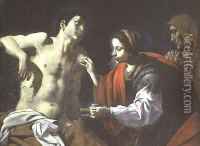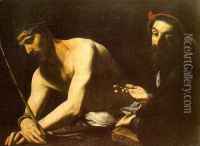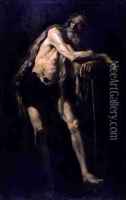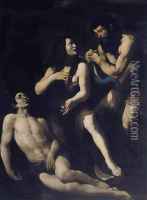Giovanni Battista Caracciolo Paintings
Giovanni Battista Caracciolo, also known as Battistello, was an influential Italian painter and a prominent exponent of the Neapolitan school of painting during the early Baroque period. Born in 1578 in Naples, he was initially trained by the Mannerist painter Fabrizio Santafede and later by Francesco Imparato. However, his style dramatically changed after the arrival of Caravaggio in Naples in 1606. Caracciolo was deeply affected by Caravaggio's dramatic use of chiaroscuro and realistic depiction of figures, which led him to become one of the leading Caravaggisti (followers of Caravaggio) in Naples.
Caracciolo's work is characterized by strong chiaroscuro, realism, and emotional intensity. He was highly adept at combining his early Mannerist training with the new Baroque style, creating works that were both dynamic and expressive. His religious compositions, in particular, reflect a deep understanding of human emotion and a mastery of light and shadow to enhance the dramatic impact of the scenes. Throughout his career, Caracciolo received numerous commissions from churches and other institutions in Naples, which helped to establish his reputation as one of the city's leading artists.
Notable works by Caracciolo include 'The Martyrdom of St. Sebastian', 'The Virgin and Child with Saints', and 'The Liberation of St. Peter'. His paintings can be found in various churches in Naples as well as in major museums around the world. Caracciolo's contribution to the Neapolitan Baroque was significant, and he played a key role in shaping the artistic landscape of the region during his lifetime. Despite his success, his work was somewhat overshadowed by other contemporaries and only in more recent times has his artistry been truly recognized and appreciated. Giovanni Battista Caracciolo passed away in 1635, leaving behind a legacy that has had a lasting impact on the history of Italian art.

